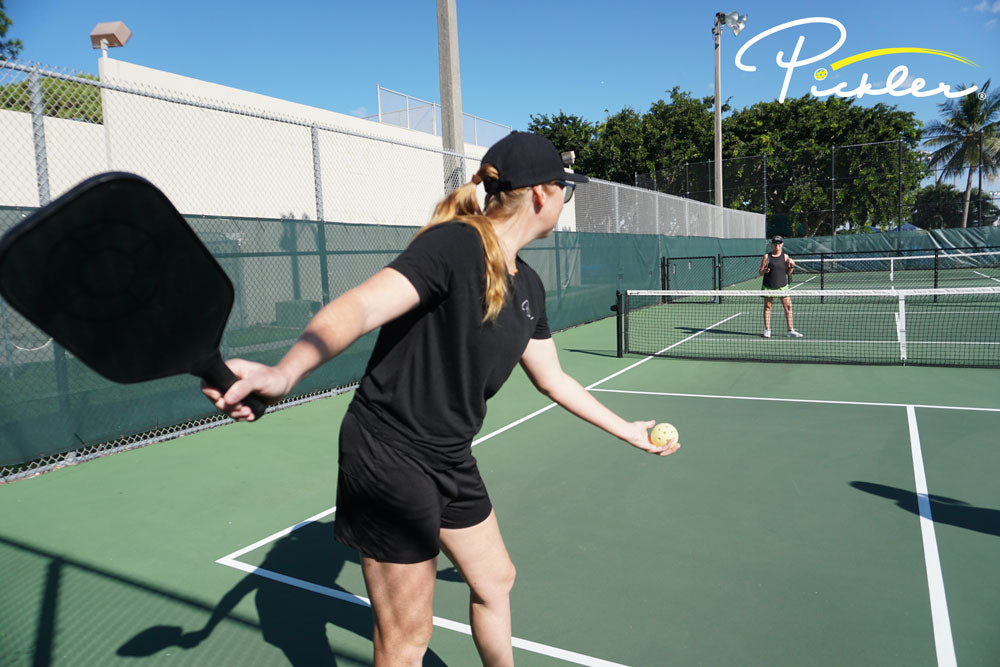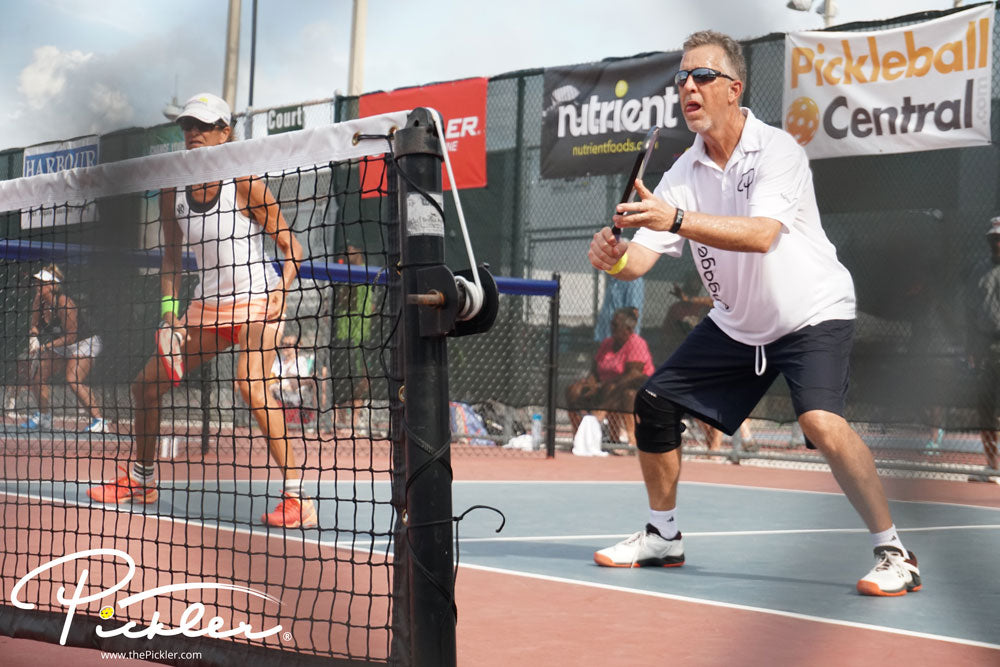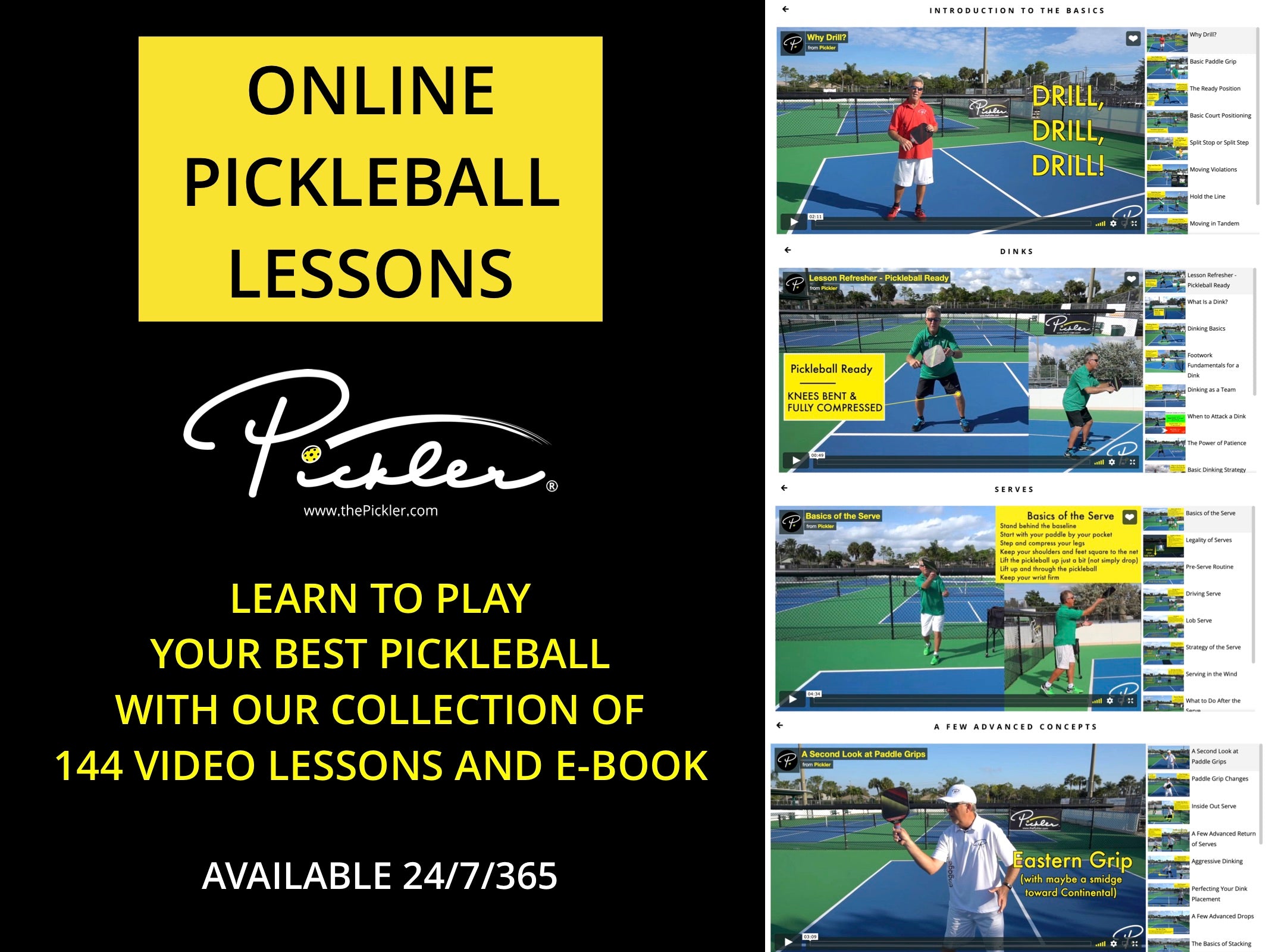When it comes to pickleball, your paddle grip is one of the most essential aspects of your game that often gets overlooked. A proper grip ensures you have the right amount of control, power, and accuracy, while an improper grip can hinder your performance and even lead to discomfort or injury. Let’s break down the key grip styles, pressure, and when you should adjust your grip during a match.
The Correct Grip Style
There are three primary grip styles in pickleball: the Eastern grip, the Continental grip, and the Western grip. The right one for you depends on your playing style and preferences. Here’s a quick overview of each:
- Eastern Grip
This grip is similar to how you’d shake hands with your paddle. It’s a versatile grip that allows you to execute both forehand and backhand shots with ease, making it a great choice for beginners. Most players prefer the Eastern grip because it gives a solid balance between power and control.

- Western Grip
To find the Western pickleball grip, start in an Eastern grip and turn your wrist 90 degrees clockwise for righties, or 90 degrees counterclockwise for lefties. The Western grip is a good choice for players who like to generate a lot of topspin on their forehand shots. However, a Western pickleball grip causes your palm to generally be in front of the pickleball paddle on a backhand, which means that you will have little to no power on your backhand shots. Use a two-handed backhand to help compensate for a weak backhand shot.
- Continental Grip
Often referred to as the “hammer” grip, the Continental grip is the go-to for volleys, serves, and overhead shots. To find the Continental grip, hold the pickleball paddle like you would a hammer when hitting a nail. In other words, start in an Eastern grip and turn your wrist slightly counterclockwise for righties, or slightly clockwise for lefties, so that the V-shape between your thumb and your index finger is slightly toward your non-paddle side. The Continental pickleball grip is the opposite of the Western pickleball grip, as it slightly favors backhands. The Continental produces nice dinks and powerful backhands, but makes it more difficult to hit forehand shots on the pickleball court.
How Much Pressure Should You Apply?
Grip pressure is crucial in pickleball. Too much pressure and your shots can become stiff and unpredictable; too little, and you might lack control over the ball. Here’s a general rule of thumb:
- Light Grip Pressure:
You want to hold your paddle with enough pressure to maintain control but not so tightly that you stiffen up your forearm and wrist. A light, relaxed grip allows for better maneuverability and less tension in your arm, leading to smoother, more natural shots. A light grip also helps absorb the ball’s impact, resulting in more control. - Tightening When Needed:
There are times when a firmer grip is necessary, especially during power shots like smashes or fast volleys. But this grip should only be momentary, as a too-tight grip will make your shots rigid and less precise. The key is to adjust your pressure according to the shot at hand.
When to Adjust Your Grip During a Match
Generally speaking, the sport of pickleball does not provide much time to change your pickleball grip between shots as so much of the game is played at the Non-Volley Zone line. With seconds between shots, it is more important to stick to one pickleball grip on the court. However, sometimes during a match, you may need to adjust your grip based on the situation. Here are a few times when you should consider switching things up:
- During High-Speed Rallies: If the pace picks up, you may find yourself hitting with more power and need a more stable grip (like the Continental) to keep control.
- On Deep Serves or Drives: For more power on long shots, you might shift to a firmer grip, but ensure you don’t overdo it. A medium grip that allows some wrist flexibility will give you both speed and control.

- When Dinking: If you’re focused on finesse, a looser grip will help you with touch and control around the net. It prevents overhitting and allows you to keep shots just inside the lines.
- Switching Between Forehand and Backhand: You might naturally adjust your grip slightly depending on whether you’re hitting a forehand or backhand. A slight shift in grip can help you adjust your paddle angle for different types of shots.
Signs You Might Need to Adjust Your Grip
Sometimes, you won’t realize that your grip is causing issues until it starts showing up in your game. Here are some signs that your grip might be holding you back:
- Tension in Your Arm or Wrist:
If you notice stiffness or discomfort in your arm or wrist during or after play, you might be gripping your paddle too tightly. Try relaxing your grip and paying attention to your wrist and arm movement. - Inconsistent Shots:
If your shots are unpredictable, it might be a sign your grip is too loose or too tight. Adjust your grip and experiment to find the balance between control and power. - Slipping Paddle:
If your paddle feels like it’s slipping or twisting in your hand, it may be a sign that your grip is too loose. Try tightening your grip slightly, but remember not to overdo it.
How to Practice and Improve Your Grip
Mastering your grip requires practice. Here are some drills you can do on and off the court:
- Shadow Swings: Practice your swings without hitting a ball. Focus on keeping your grip relaxed and your wrist flexible. This will help you develop muscle memory, allowing you to easily adjust during real games.
- Grip Pressure Drill: Hold your paddle with the correct grip and then squeeze tighter for 5-10 seconds. Alternate between relaxing your grip and squeezing it to practice feeling the difference. This will help you learn the right amount of pressure to apply during your shots.
- Hand Position Practice: Stand with your paddle at different positions, practicing the transition between grips. Try transitioning from an Eastern grip to a Continental grip during your swings and see how it feels. This will help you be more fluid when adjusting your grip during a game.
Find Your Perfect Grip
Your paddle grip is one of the most personal aspects of your game, and the right one will make all the difference. By experimenting with different grips, adjusting your pressure, and being mindful of when to make those small mid-game adjustments, you’ll find the grip that works best for your playing style. A good grip will give you better control, comfort, and consistency—leading to more wins on the court.
WANT MORE PICKLEBALL TIPS AND STRATEGIES?
For more on enhancing your paddle technique, check out The Pickler’s Blog, “Perfect Your Pickleball Volleys by Focusing on Your Paddle Face & Follow-Through.”

Plus, if you want more pickleball tips and strategies on every aspect of your pickleball game, check out Pickler’s online video lesson collection called My Pro Pickleball Coach. My Pro Pickleball Coach is a fraction of the price of one clinic or even one lesson, and features over 140 video lessons (over 7 hours of instruction!), as well as a corresponding e-book. These online video lessons are available on demand 24/7 and breakdown every aspect of the sport of pickleball, including pickleball drills, strategy, and advanced concepts, so you will play your best pickleball.

Anuncie Aqui / Advertise Here
Sua marca para o mundo Pickleball! / Your brand for the Pickleball world!

 English
English  Spanish
Spanish  Portuguese
Portuguese  German
German  Italian
Italian  Japanese
Japanese  French
French  Polish
Polish  Russian
Russian  Netherlands
Netherlands  Hungarian
Hungarian  Turkish
Turkish  Videos
Videos  The Pickler
The Pickler








 English (US) ·
English (US) ·  Portuguese (BR) ·
Portuguese (BR) ·